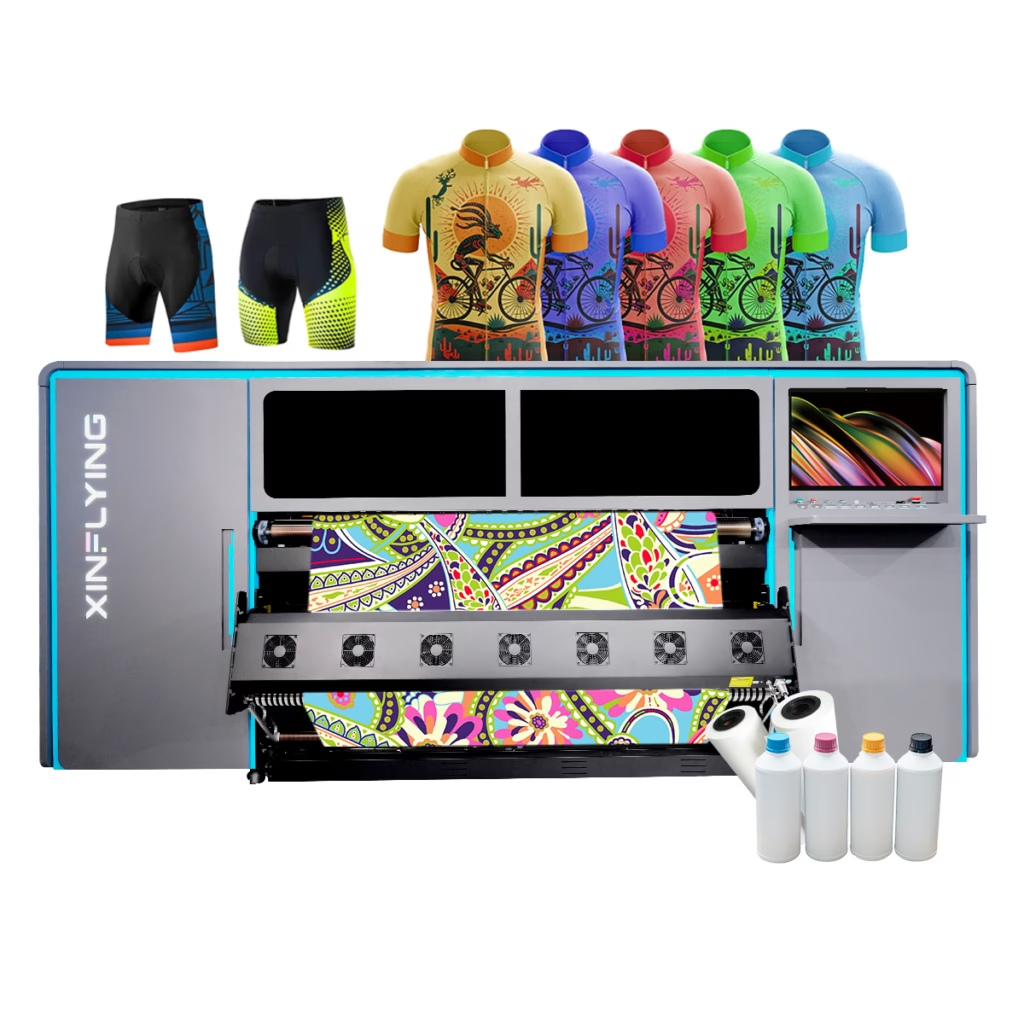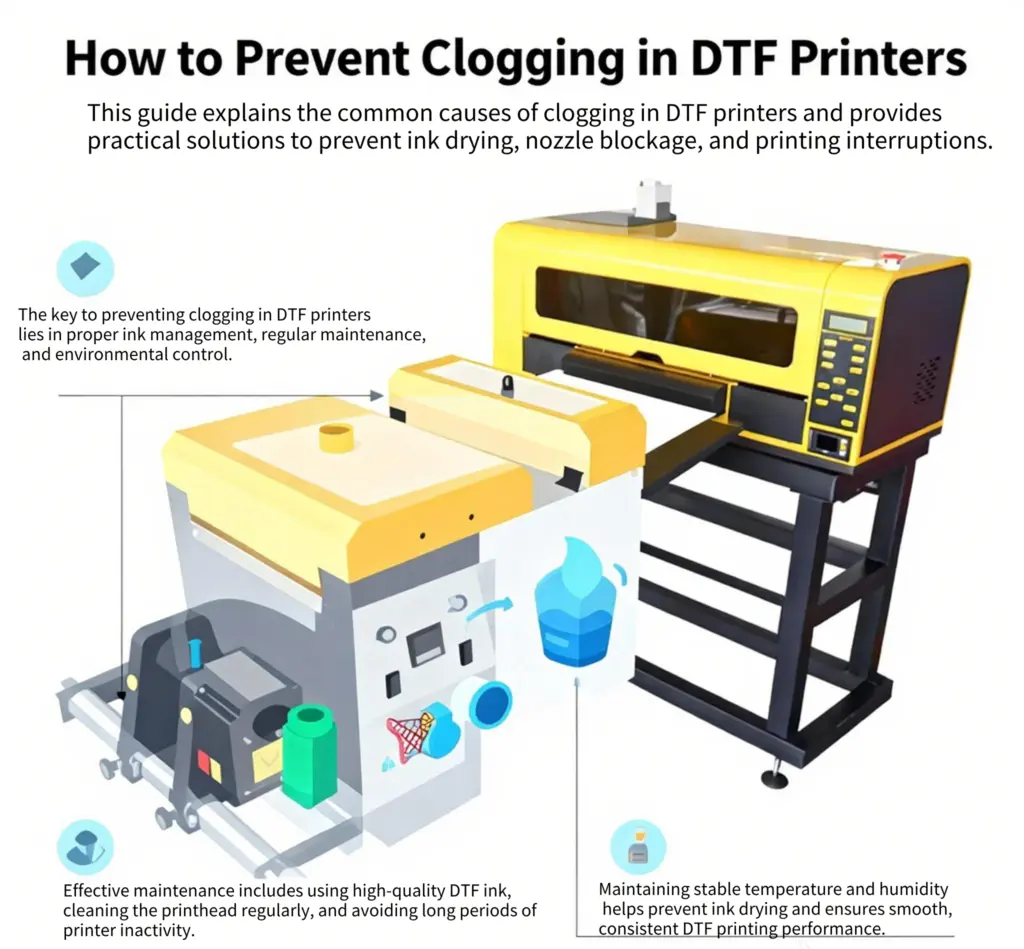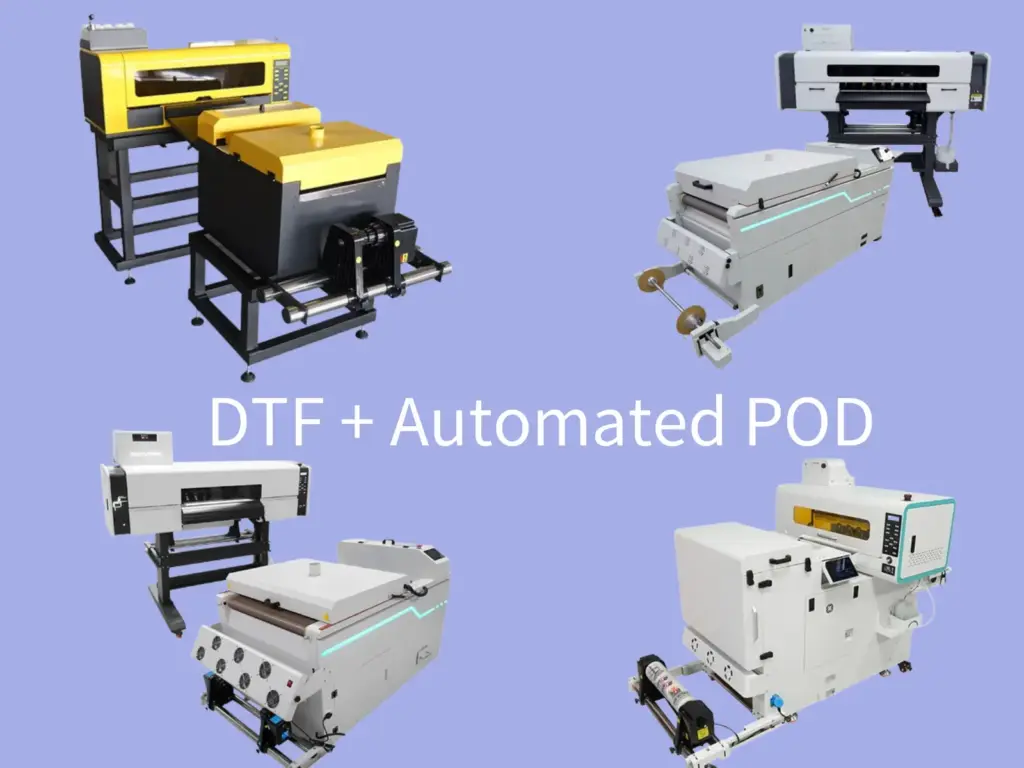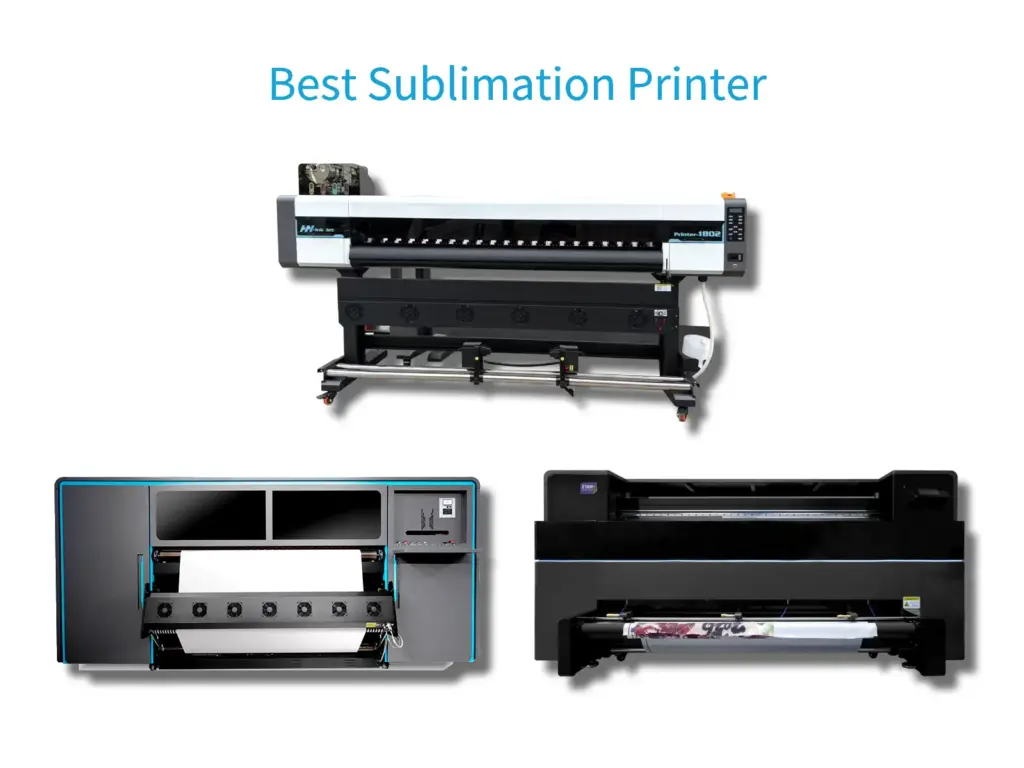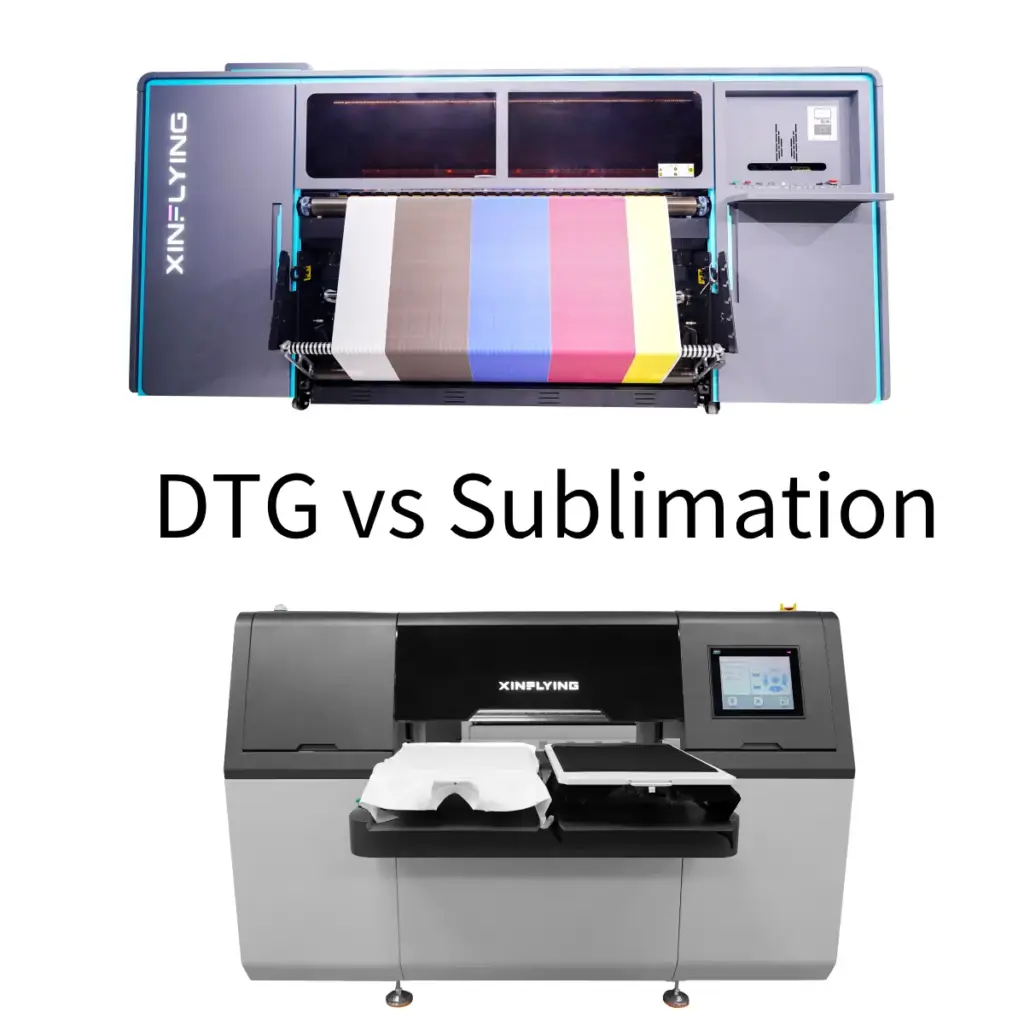Manapság, a kis stúdiók az igény szerinti nyomtatást részesítik előnyben, hogy jobban ki tudják elégíteni a fogyasztók igényeit, így Direct-to-Garment (DTG) és Direct-to-Film vagy Film-to-Garment (DTF) a nyomtatás felkeltette azoknak a gyártóknak a figyelmét, akik személyre szabott ruhadarabokkal és kis gyártású termékekkel szeretnének haladni.
Először, A DTG nyomtatás a fő megközelítés a pólónyomtatásnál és a kis produkcióknál, most divatba jött a DTF-nyomtatás. Mindkettő alkalmas apró tárgyakra és személyre szabásra, például maszkok vagy pólók. azonban, munkafolyamataik és eredményeik eltérőek, így előfordulhat, hogy a cégek haboznak választani közülük. Íme egy rövid bevezető e két nyomtatási módhoz.
Mi az a DTG nyomtatás
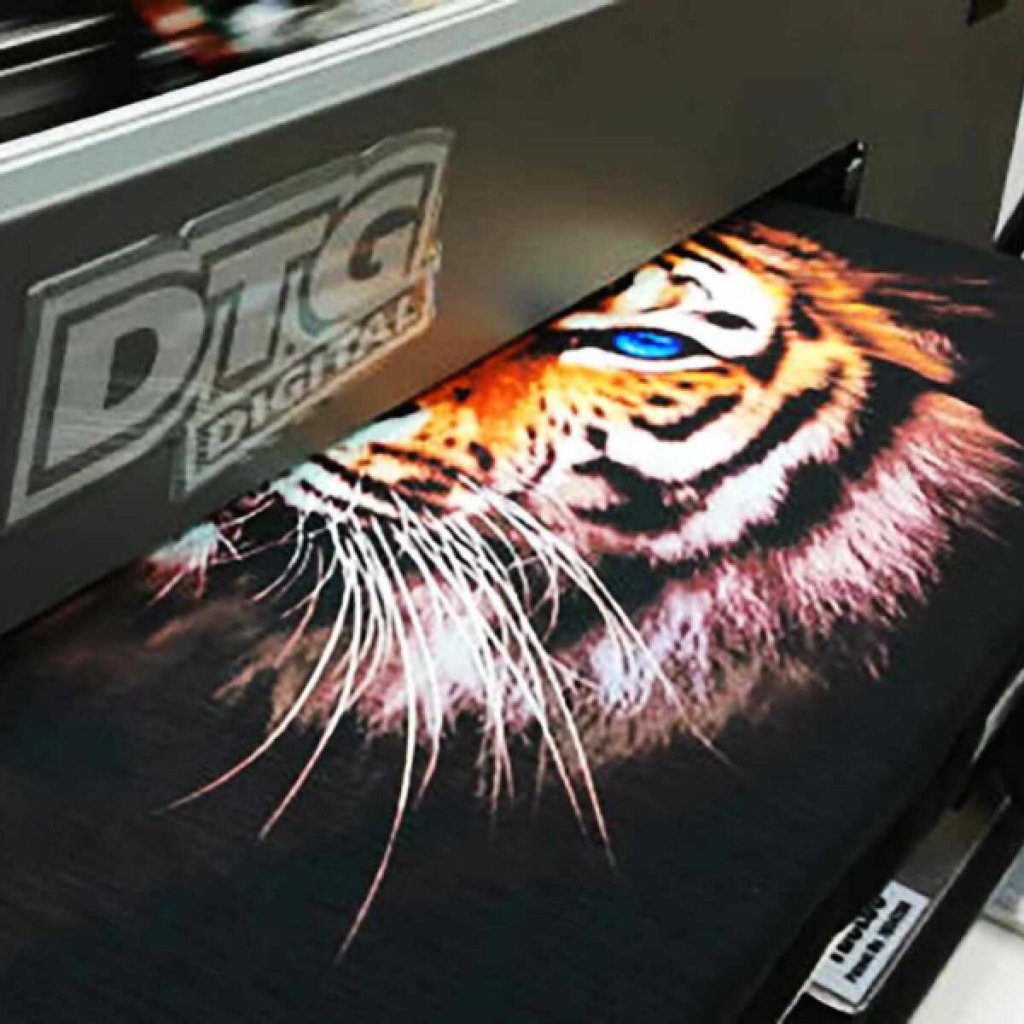
Forrás: Pinterest
Bevezetés
Közvetlen garantálás (DTG) a nyomtatás egyfajta digitális nyomtatás a szöveten. A tervet először digitalizálni kell a rendszerben, mielőtt a raszteres képfeldolgozó nyomtatási utasításokká alakítaná. (HASÍTÁS) szoftver.
Hogyan működik a DTG nyomtató?
A DTG nyomtatás munkafolyamata alapvetően négy lépésből áll. Az első lépés a szövet speciális megoldással történő előkezelésével kezdődik. Ezt a lépést be kell fejezni, mert közvetlenül a ruhán fogunk dolgozni. Ezzel, a tinta megfelelően rögzítve lesz, és nem jut át a szöveten.A második lépés fűt. A szövetet fel kell melegíteni az előkezelés aktiválásához a nyomtatás előtt.
Ezek után, a szövetet a nyomtató nyomólapjára helyezzük és megfelelően igazítsuk. DTG nyomtatással, közvetlenül nyomtathatja a grafikát az anyagra anélkül, hogy a harmadik lépésben áthelyezné, így a folyamat rövidebb lesz, mint a DTF-nyomtatásnál. Választhatunk fehér maszkot alapként, hogy garantáljuk, hogy a tinta ne keveredjen a hordozó színével annak ellenére, hogy fehér alapon felesleges. Lehetőség van arra is, hogy csökkentse a fehér maszk használatát, ha csak bizonyos helyeken alkalmazza a fehéret. A fenti folyamat befejezése után, utolsó préselés szükséges a tinta rögzítéséhez, és akkor az anyag kész lesz. A DTG nyomtatás folyamata két hőkezelést tartalmaz, ezért nagyon fontos a megfelelő kiválasztása szublimációs nyomtatógépgyártó a nyomtatáshoz.
Alkalmas szövettípusokhoz
A DTG nyomtatás folyamatában, a pigment tintát hővel kell préselni, hogy a ruhához tapadjon, amelyet nehéz minden szövettel kompatibilis. Ezért, ez a módszer a szövetek egy bizonyos spektrumára korlátozódik, például, pamut, organikus pamut, fésült pamut, és vászon, mert a vízbázisú tinták gyorsan és tartósan integrálhatók a szövetbe. A tinták nehezen tapadnak az aljzathoz vízálló tulajdonságokkal, mint pl poliészter. DTG nyomtató cég a legmodernebb közvetlen ruhanyomtató rendszerekkel jó áron színes nyomatokat biztosíthat egyedi pólókra.
Mi az a DTF nyomtatás
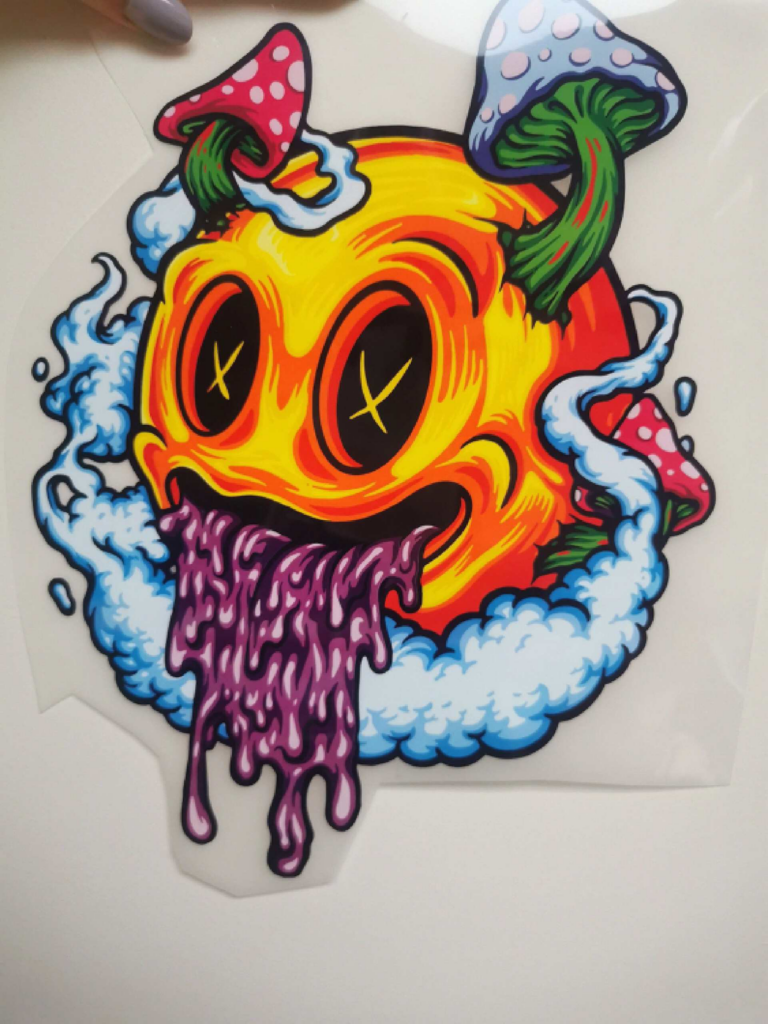
Forrás: Pinterest
Bevezetés
A DTG és a DTF nyomtatás egyaránt digitális tintasugaras technológiát használ, hogy hasonló módon nyomtatja a grafikát az anyagra. A legnagyobb különbség a Direct-to-Film vagy a Film-to-Garment (DTF) a nyomtatás egy transzferfólia segítségével nyomtatja a mintát a ruhára.
Hogyan működik a DTF nyomtató?
A DTF nyomtató munkafolyamata különbözik a DTG nyomtatóktól. Először is, nincs szükség a ruhanemű előkezelésére a DTF nyomtatáshoz, mert a mintát egy fóliára kell előre nyomtatni, amelyet át kell vinni a ruhára, ami hosszabb időt vesz igénybe, mint a DTG nyomtatás. DTF nyomtatási tinta fontos anyag a DTF nyomtató zökkenőmentes működéséhez. Amikor a tinta rákerül a filmre, egy réteg fehér tintát kell felvinni a többi színes réteg tetejére, hogy az alapként szolgálhasson, amikor a ruhára kerül.. A fehér tintát alapként használják a design élénk színeinek megőrzésére. DTF nyomtatási film félig átlátszó tulajdonságokkal képes ellenállni a magas hőmérsékletnek, és különféle színű vagy típusú textíliákra használható.
Közvetlenül azután, hogy a festéket a fóliára nyomtatták az adott mintának megfelelően, A DTF nyomtatáshoz egy ragasztópor amely fontos anyag a filmen lévő tinta szárításához és kikeményítéséhez. DTF nyomtató por tisztának kell lennie, és exkluzív kötő hatással bír. Kifejezetten DTF-hez tervezett nyomtatókon, a ragasztópor felhordása már szerepel a nyomtató működési programjában, megkímélve Önt a kézi végrehajtástól. A folyamat utolsó szakaszában, a nyomtatott fóliát felveszik és belenyomják a ruhadarabba.
Kína a ruhagyártó hatalom, és kiforrott technológiával rendelkezik a nyomdagépekben, így mérlegelheti a választását DTF nyomtató gyártó Kínából.
Alkalmas szövet/terméktípusokhoz
Nem kell aggódni amiatt, hogy az anyag kompatibilis-e a túlzott hővel a DTF-nyomtatás során, mert a mintázatú fóliák hően olvadó ragasztóval vannak a ruhához rögzítve.. Ennek eredményeként, A DTF nyomtatás képes megbirkózni pamut kivételével bármilyen típusú ruha a DTG nyomtatáshoz képest.
DTG vs. DTF nyomtató kereskedelmi használatra

Forrás: Pinterest
Mindkét típusú nyomtatási mód alkalmas lehet hasonló tulajdonságokkal rendelkező termékekhez, mégis megvannak a maguk előnyei és hátrányai a különböző termelési tényezők figyelembevételével. Mit kell tehát figyelembe vennünk a döntés meghozatalakor?
A nyomtató ára és a tinta ára
A DTG nyomtató nagyon drága. Egy szabványos DTG nyomtató akár $13,000. Még egy belépő szintű DTG nyomtató is költséges lehet $8,000. Összességében az összes fogyóeszközhöz és felszereléshez hatalmas beruházásra lehet szükség.
A DTF nyomtatás legnagyobb előnye az alacsony költség. Fogyóeszközök, beleértve a transzferfóliákat, ragasztópor, a nyomtatótinták pedig azok költséghatékony hogy a kiadások megspórolhatók és a haszon optimalizálható legyen. Továbbá, több minta nyomtatható egyetlen lapra vagy egy tekercs filmre, hogy pénzt takarítson meg.
Mindkét nyomtatási módszer jelentős mennyiségű fehér tintát igényel, ami elképesztően drága, viszont, a hozzáértő Rip szoftver segítségével az alapszíntől függően beállítható, hogy mennyi fehér tinta kerüljön a DTG-be, és jelentős költségmegtakarítás érhető el. Például, A neoStampa egyedülálló nyomtatási módot kínál a DTG számára, amely nem csak a színek gyors kalibrálását teszi lehetővé, hanem azt is beállíthatja, hogy mennyi fehér tintát használjon a különféle anyagokhoz.
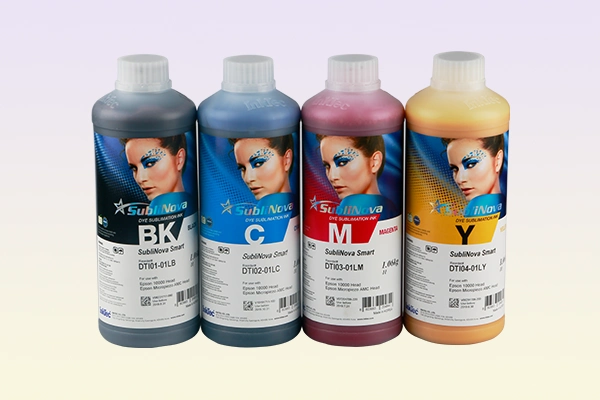
A DTG nyomtatás csökkentheti a fehér tinta használatát világos anyagokon, de növelheti a fehér tinta használatát sötét anyagokon, tehát a tintaköltsége attól függ. azonban, A DTF nyomtatás a grafikát filmen keresztül viszi át a ruhára, így a tinta mennyisége nem változik, és a költsége változatlan marad akár világos, akár sötét ruhák esetén.
Termékeinek fajtái
A DTG nyomtató és a DTF nyomtató közötti nyomtatási hatás egészen más. DTG nyomtatásban, a rajz és a tinták keverednek az anyaggal, ezért durvább és alaposabb érzetet adnak, de meg tudja tartani a pamut puha fogantyúját. Kívül, a ruhák is maradhatnak a lehető legjobban légáteresztőek. DTF nyomtatás közben, a póló grafikája plasztikusnak és fényesebbnek tűnik a fixáló púder miatt, képei pedig kevésbé kombinálódnak az anyaggal. Ennek eredményeként, a kép színekben jobb minőségűnek tűnik, mert a színeket nem befolyásolja az alapszín.
A DTG csak pamutra nyomtatható, de a DTF segítségével sokféle anyagra lehet nyomtatni. A DTF jobb választás lehet, ha bármilyen szövetre vagy ruhadarabra szeretne alkalmazkodni. Ráadásul, a transzferfóliákat más apróságokra is fel lehet vinni, mint például a csészék, termosz palackok, és cégtáblák. Kipróbálhat további lehetőségeket, miután egyeztetett a DTF nyomtató szállítója.
A DTG és a DTF nyomtatás egyaránt CMYK-ot használ (Cián, Bíborvörös, Sárga, Fekete) hogy a színek élénkségét fizikai hordozón biztosítsák. Jó színkeverési tulajdonságaik lehetnek az anyagon, és megkettőzhetik a gradiens változásait és a finom különbségeket a grafikában.
Mennyiség & Termelékenység

Forrás: Pinterest
Mivel a DTG nyomtatás sorról sorra nyomtatja a terveket, ez az lassabb nyomtatási lehetőség. Belépő szintű DTG nyomtatóval, nyomtathat kb 20 pólók óránként, kivéve az ingek előkezelését. Amikor a DTG nyomdagépeket mind beállítják egy üzletben, egy kétfős csapat befejezheti a teljes nyomtatási és gyártási folyamatot 6-7 ing óránként.
A legnagyobb haszon A DTG nyomtatás azon képessége, hogy bonyolult grafikákat készítsen különféle színekben, gyors nyomtatási sebesség mellett. Rövid felkészülési ideje van. Ha előkezelt ruhadarabjai vannak, és hőprést szerezzen be nekik, majd sorba rendezheti őket és elkezdheti a nyomtatást. Ez a nyomtatási módszer jól működik azoknál a kisméretű ügyfeleknél, akik kevesebbet rendelnek 30 ingek testreszabott nyomatokkal.
A DTF megfelelőbb lehet kisméretű nyomtatáshoz, ha jó színeket és kis befektetést szeretne. Ellenkezőleg, A DTG ma már több alkalmazkodó nyomtatóberendezést is tartalmaz, különféle lemezekkel és eljárásokkal, lehetővé téve gyorsabb és rugalmasabb nyomtatás. Több grafika is nyomtatható egyetlen transzferfóliára, ami jelentősen csökkenti a gyártási időt. A nyomtatott filmeket továbbra is kézzel kell vágni és szétválasztani, de a DTG gépek nagyobb és gyorsabb kimenetet tesznek lehetővé, és sokkal sokoldalúbbak, mint a DTF. Így, kulcsfontosságú, hogy megértsük az egyes cégek termelési méretét.
Következtetés
Itt bemutatjuk a DTG és DTF nyomtatás fő munkafolyamatait és különbségeiket. Bár a DTF nyomtatás felülmúlja a DTG nyomtatást, eltérő funkciójuk és alkalmazásuk van. Következtetésképpen, választhat a Digitális textil nyomtató gyártója amely a legjobban megfelel az ön költségeinek, termékválaszték, és mennyiség. A fenti bevezető segíthet a döntéshozatalban, és széles perspektívát biztosít.

